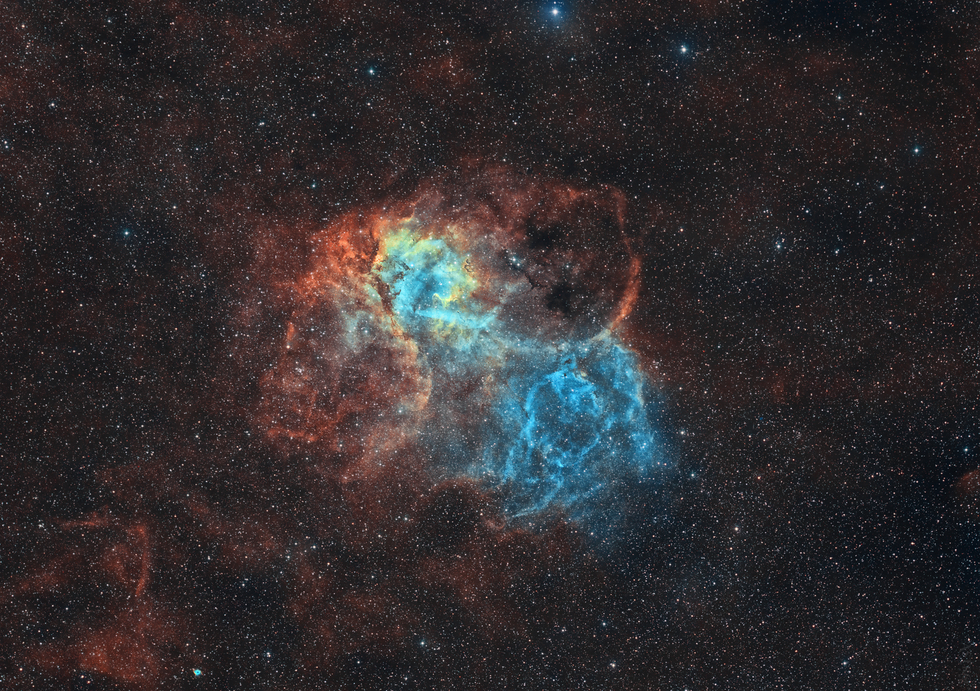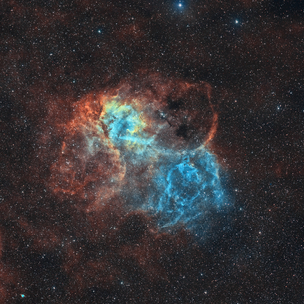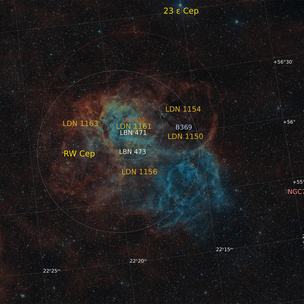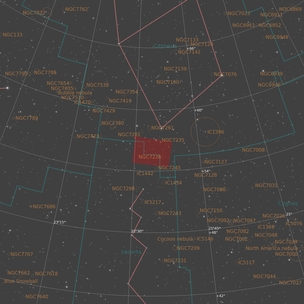SH2-132 - The Lion Nebula
0
12
SH2-132 - The Lion Nebula
Before we get to the details, do you see the small, oddly shaped squiggle at the bottom, left of center? That's the planetary nebula G102.9-02.3.
Details about SH2-132:
Sh2-132 is a large emission nebula visible in the constellation Cepheus.
It is located on the southern edge of the constellation, a short distance from the boundary with the Lizard, along the plane of the Milky Way; the best period for its observation in the evening sky falls between the months of July and December and is greatly facilitated for observers located in the northern hemisphere regions of Earth.
Sh2-132 is located at a distance of nearly 3200 parsecs (almost 10400 light-years), thus placing it within the Perseus Arm, in the region of Cepheus OB1, a large and bright OB association. The stars responsible for the ionization of its gas are very hot and massive; in particular, two Wolf-Rayet stars have been identified, known as HD 211564 and HD 211853 (the latter also having the abbreviation WR 153), as well as a spectral class O8.5V star and about ten B-class stars. Around the O-class star and one of the Wolf-Rayet stars extends a bubble clearly visible in the radio wave band, identified as Shell B, probably originating from the stellar wind of the two massive stars. A similar but smaller structure, Shell A, hosts a K-class star near its center. Chain star formation processes are believed to have taken place in the nebula in the past; currently these processes appear to be suspended, since there is no evidence of recent activity. Nine sources of infrared radiation and a maser with H2O emissions have been detected in the direction of the nebula.
(Source: Wikipedia)
Details about SH2-132:
Sh2-132 is a large emission nebula visible in the constellation Cepheus.
It is located on the southern edge of the constellation, a short distance from the boundary with the Lizard, along the plane of the Milky Way; the best period for its observation in the evening sky falls between the months of July and December and is greatly facilitated for observers located in the northern hemisphere regions of Earth.
Sh2-132 is located at a distance of nearly 3200 parsecs (almost 10400 light-years), thus placing it within the Perseus Arm, in the region of Cepheus OB1, a large and bright OB association. The stars responsible for the ionization of its gas are very hot and massive; in particular, two Wolf-Rayet stars have been identified, known as HD 211564 and HD 211853 (the latter also having the abbreviation WR 153), as well as a spectral class O8.5V star and about ten B-class stars. Around the O-class star and one of the Wolf-Rayet stars extends a bubble clearly visible in the radio wave band, identified as Shell B, probably originating from the stellar wind of the two massive stars. A similar but smaller structure, Shell A, hosts a K-class star near its center. Chain star formation processes are believed to have taken place in the nebula in the past; currently these processes appear to be suspended, since there is no evidence of recent activity. Nine sources of infrared radiation and a maser with H2O emissions have been detected in the direction of the nebula.
(Source: Wikipedia)
SPECIFICATIONS
Telescope
Takahashi FSQ-106EDX4
Camera
FLI PL16083
Location
IC Astronomy, Spain
Date of observation
December 2021 - November 2022
Filters
Astrodon HSO
Processing
Processed in PixInsight and Photoshop






